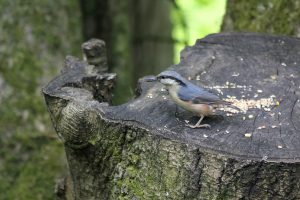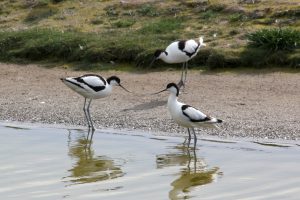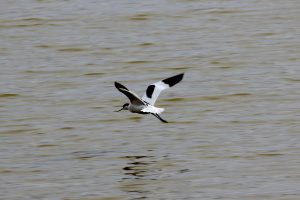On Sunday 21st May, I met with Poet / Writer Sarah Hymas and Conservationist / Writer / Composer Laurence Rose at the wonderful RSPB reserve at Leighton Moss. It was a beautiful day, and we went for a walk to explore the reserve, and plan how we would collaborate for the workshop the following weekend. It was wonderful to observe closely – listening and watching – opening our senses to all Leighton Moss had to offer.
Whilst watching the swarms of midges / flies over the ponds, we talked about how species need to adapt to survive changes in the climate, landscape etc. Also how long this way of adapting and evolving needs to take effect. For example – if a migrating bird needs to travel further due to climate change and extended desert regions, how will the bird know to compensate for this before setting off, and how does this impact on the population. The seasons are becoming more confused and mixed, which can have huge knock on effects for many species.
The rate and effectiveness at which a species can adapt and evolve can depend on the duration of its life-cycle – and how long it takes a generation to last- if the breeding cycle is quite often, and lifepsace short, then there is more scope to evolve more effectively ?
Laurence coined the word Phenology – which I hadn’t heard before – so here is a description….
Phenology is the study of periodic plant and animal life cycle events and how these are influenced by seasonal and interannual variations in climate, as well as habitat factors (such as elevation). The word, coined by the Belgian botanist Charles Morren around 1849,[1] is derived from the Greek φαίνω (phainō), “to show, to bring to light, make to appear”[2] + λόγος (logos), amongst others “study, discourse, reasoning”[3] and indicates that phenology has been principally concerned with the dates of first occurrence of biological events in their annual cycle. Examples include the date of emergence of leaves and flowers, the first flight of butterflies and the first appearance of migratory birds, the date of leaf colouring and fall in deciduous trees, the dates of egg-laying of birds and amphibia, or the timing of the developmental cycles of temperate-zone honey bee colonies. In the scientific literature on ecology, the term is used more generally to indicate the time frame for any seasonal biological phenomena, including the dates of last appearance (e.g., the seasonal phenology of a species may be from April through September).
Our conversation continued to be fascinating, and developed into a discussion about the interconnected-ness of many species – if change happens to one, then it effects the others.
Climate change effects the timing of certain seasonal events – which in turn effects bird-life – and many other interconnected species such as insects and plants. How can birds adapt? – perhaps not as fast as insects…
We saw an osprey, marsh harriers, grebe, lapwings, many song birds, ducks and geese… we heard sedge warblers, reed warblers, cetti’s warblers,
I went off to the part of the reserve on Morecambe bay and watched a huge number of avocets mingled with black headed gulls.







Comments are closed